Review for Tiger And Bunny: The Rising
Introduction
We’ve had a couple of delays, but the second Tiger and Bunny movie is now here for us to enjoy, and as it is to date the last of the Tiger and Bunny franchise, we’d best take the time to appreciate it. It’s really only been 15 months since the first movie was released, which in Evangelion 3.33 terms isn’t even a delay at all. It’s a bit of a head scratcher as to why Tiger and Bunny hasn’t caught on the way it should. After all, its superhero reality TV mash-up is tailored for Western audiences, its characters playing to classic hero archetypes, while its concept fresh and original enough to stand up well alongside its peers. That it sort of flopped in the UK is understandable, given the treatment Kazé gave to the TV series, but it really should have made more noise in other English speaking territories. The first movie was a DVD only release in Australia, and they haven’t even released this second film as yet. Perhaps genre fatigue is beginning to set in. There’s only room for so many superhero franchises, and with the cinema and now the TV filled with the Marvel and DC pantheons, where are you going to fit an upstart anime from around the other side of the world?
It is a shame as this second film, Tiger and Bunny: The Rising really is quite good, and following on from The Beginning’s schizophrenic nature, half recap and half original story, the completely original tale of The Rising is a lot more satisfying. But I get ahead of myself.
The future has arrived, and with it the superheroes. Some forty years previously, genetic mutations started appearing in people, resulting in them developing strange powers. They were called NEXT, and some of them began using their powers to help people. They became the heroes that stopped crime and kept people safe. Today, in Stern Bild city, heroes are big business and indeed entertainment. Sponsored by major companies, they compete in a game show called Hero TV, trying to rack up as many points as possible as they go about their hero business to be crowned King of the Heroes each year. Of course being telegenic, and knowing just how to make an entrance are important as well.
Not so important to Wild Tiger, a.k.a. Kotetsu Kaburagi who got into the hero business for the old fashioned reason, to help people. He uses his ‘Hundred Power’, an ability that boosts his strengths 100-fold but only for five minutes, to try and do good, but his enthusiasm usually leaves a lot of property damage in its wake. As a result he tends to slip down the rankings. It gets to the point where his sponsors pull out, and his manager quits. He’s got just one chance to redeem himself, and join a new corporation that is trying something new in the hero game. They’re establishing a hero team, a first for Hero TV, and Kotetsu will be sidekick to the hottest young thing on the block. Barnaby Brooks Jr. has the same powers as Wild Tiger, but that’s where the similarity ends. His approach to the superhero business is diametrically opposed to Kotetsu’s and he’s a lot more business-like and pragmatic in his attitudes. He’s also got a very personal and not at all altruistic reason for becoming a hero. Naturally they wind up butting heads on the first day on the job. They may not be much of a team, but at least the new suits look cool, and as long as Hero TV’s ratings go up, Wild Tiger may just hold onto his job.
As The Rising begins, some time has passed since the events at the end of the series. With his powers on the wane, only now offering him a minute of ability, Kotetsu has been working in League 2 of the Heroes, mentoring the less capable, although he still approaches his duties with his haphazard enthusiasm. Loyal as ever, his partner Barnaby Brooks Jr. has also chosen to work in League 2, even though his powers remain undiminished. But Hero TV and its parent company, Apollon Media is in trouble, unable to balance the books following the damaging Maverick affair. The new boss, Mark Schneider has a reputation for turning things around, and the first thing he does is bring Barnaby back to League 1, where the action is and the ratings are. The second thing he does is give him a new partner, Golden Ryan, a narcissistic hero with gravity powers who’s in it for the adulation. The third thing he does is shut down League 2, and sack Kotetsu.
It couldn’t have happened at a worse time, as there are a trio of NEXT powered villains in town, intent on recreating Stern Bild’s Legend of the Goddess. The legend begins with an image of the Goddess, progresses to falling buildings, comatose people, and ends up with the city falling into an abyss. And against these particular villains, even the League 1 heroes are out of their depth.
Picture
Just like the first film, Tiger and Bunny: The Rising gets a 1.78:1 widescreen transfer at 1080p resolution on a BD 50. The image is clear and sharp throughout, with strong colour reproduction, no visible compression artefacts, and no signs of banding. It looks excellent, with the characters recognisable from their TV incarnations, albeit with some changes taking into account the passage of time, different hairstyles and day clothes. The world design is great, rich and complex, but the real joy is in the action animation, which certainly lives up to the superhero aesthetic. There are visual flourishes as well, with a Justice Parade which looks appealing, if not quite up to the standards of Ghost in the Shell Innocence, or Cowboy Bebop the Movie. There’s also a pop-up book style retelling of the Legend of the Goddess that makes a fair bit of impact.
The images used in this review were kindly supplied by All the Anime.
Sound
You have the choice between DTS-HD MA 5.1 English and Japanese, with translated subtitles for the Japanese audio, and a songs and signs track for the English. In a change from the release of the first film, the audio options are locked during playback (except for the pop-up menu). In another change, the songs have subtitles this time, although only for the credits sequences, no Blue Rose performances, I’m afraid. The first film also erased the Japanese burnt in subtitles for the on screen English text. In this film there’s only one moment with English text (that isn’t spoken aloud), and the Japanese subtitle remains on the print on that occasion.
Tiger & Bunny sounded good in the TV series, but getting the full surround upgrade for the feature film really kicks things up a level when it comes to action and effects sequences. The show’s music is familiar from the series, although there are a couple of new themes as well. A superhero show should give good value when it comes to the action, and this is an audio track that will immerse you in the film. For the purposes of this review I went with the Japanese audio, and it was just as entertaining as I recalled from the TV series. I gave the English audio a try, and that too was comfortable and familiar. Tiger and Bunny is a rare anime that is just as much fun in either language, and I highly recommend watching both English and Japanese versions.
Extras
One small annoyance with the first film was a drop in the on-disc extras, when it went from the US 2-disc release to a single disc Blu-ray in the UK, leaving “only” a couple of hours of extra features on the disc. All the Anime compensated with the deluxe packaging and artbook.
It’s happened again for The Rising. This deluxe combo release has the film on Blu-ray and DVD, with deluxe packaging and artbook (neither of which I have seen for the purposes of this review), but the on disc extras are fewer than their US counterpart. Given that the second film gets fewer extras to begin with, it’s more noticeable this time.
The disc presents its content with a static menu screen.
Theatre Manners last 1:44, and a live action Tiger and Bunny offer some insights into cinema etiquette.
TV Series Special Digest lasts 10:07 and offers both of the recaps of the series, the first shown before The Beginning, and the second before The Rising.
Weekly Movies 12:15 are a series of SD animations where the various heroes are introduced to new recruit Golden Ryan, to comic effect.
The Art Gallery is a 2:50 slideshow.
You get the Theatrical Trailers (2:50), the Pilot Trailer (1:42), and Commercial Collection (2:23), all lacking subtitles.
The Clean Opening lasts 1:35, and the Clean Ending lasts 2:47. Note that the latter shows the animation that’s shrunk down to a small box in the end credit reel as full screen, but only that. You don’t get the whole end credit song.
In addition to all this, the US disc has a San Francisco Premiere featurette, and an Interview with Producer Kazuhiko Tamura, the latter of which I would have liked to see on the UK release.
Conclusion
That was fun! I don’t know about critical acclaim or commercial success, but the Tiger and Bunny anime is one of the most fun anime that I have in my collection, and like my all time favourite movies, is the first title that I will reach for when I’m stuck for something to watch, and overwhelmed by the mountain masquerading as my DVD/Blu-ray collection. The first film didn’t quite satisfy in that way because of its half and half nature, but this second film is spot on, a wholly original story that moves the characters forward, and delivers on the action, visual splendour, and more importantly the character dynamics that makes Tiger and Bunny so great.
It’s pretty much a classic structure though, have your protagonists in something approaching a happy place at the start of the film, but move the story to take that happy place away, throw some drama and tension, and character conflict into their lives. Introduce a villain, or in this case several villains, that raise the stakes and threaten the heroes, and then have our heroes come together, reconcile and find a new level of understanding to... well you’ll have to watch the film to see if they prevail or not.
What’s interesting in this film is that one of the villains is unexpected, the new owner of Apollon Media who looks like a venture capitalist, but turns out to be more of a corporate raider. His act of villainy is to split up the team of Tiger and Bunny, and sow some character conflict between them, leaving Kotetsu thinking that Bunny’s still all about the money, while Barnaby thinks that Tiger’s giving up. You might think that Golden Ryan is a villain, the unwanted third wheel that comes between Tiger and Bunny, but he’s really there as a contrast, a reminder of what Barnaby was like at the start of the series, and how much he has changed under Kotetsu’s influence. Golden Ryan is all about the money and the adulation, and he’s annoying as hell. What’s strange, particularly given the typical Japanese pronunciation, is that the writers restrained themselves from going down the whole Lion and Bunny route. I think this is one time they should have ignored restraint.
The Rising isn’t a long film, with the final third given over to the conflict between heroes and villains, but it does give the chance for each of the characters to get some screen time. Rock Bison is having something of an identity crisis in this film, still languishing in the league, while Origami Cyclone is making more of an impact. Sky High is coming to terms with his daft personality, Blue Rose is still nursing a reluctant crush on Kotetsu, and Dragon Kid is working on a new power. We get to see Kotetsu with his family again, and learn that there’s been a further degree of reconciliation since the end of the series, but the greatest character arc here is that of Fire Emblem. I have to be honest and say that Fire Emblem was my least favourite character in the series, filling the comedy effeminate gay stereotype that populate anime for no other reason than for heterosexual characters to exclaim that they’re being creeped out. It looked at the start of this film that we’d get more of that, but it suddenly takes a turn into darker and more realistic territory, as we get to see Fire Emblem’s past, and the challenges he had coming to terms with his sexual identity. It’s a good enough arc to redeem the character in my eyes, and make him more realistic. It’s just a shame that they couldn’t draw the character in the same way during the TV series.
A couple of months ago, I finally got around to watching X-Men: Days of Future Past. Tiger and Bunny: The Rising is the better superhero movie. I certainly had more fun watching it. Its story is appealing, the characters are utilised well, and it’s simply more entertaining. It’s a step up over the first movie, and in some ways, especially in terms of visuals, it’s a step up over the series as well. That it leaves you wanting more is a good thing, but then you get to hoping that they make more Tiger and Bunny, and at this stage that might be a forlorn hope.
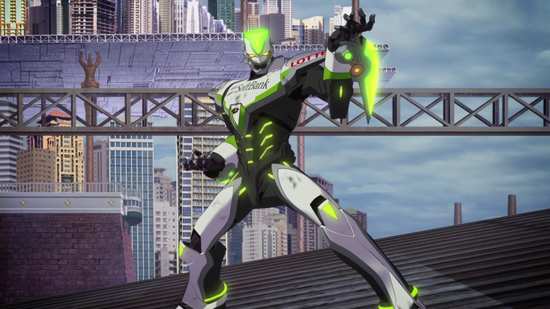
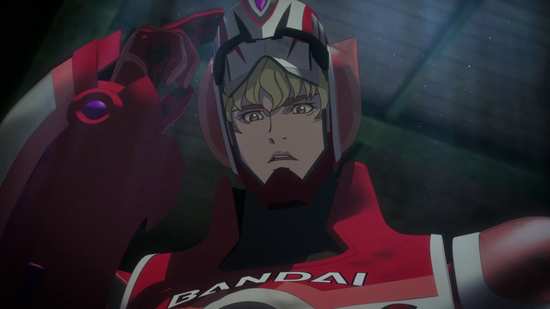
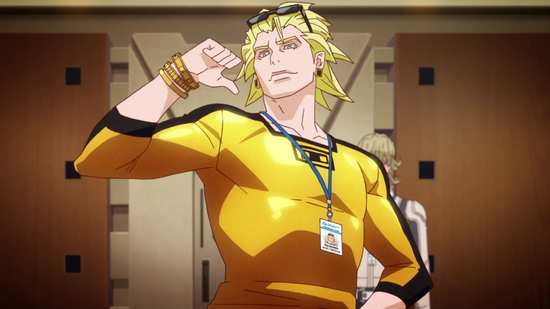
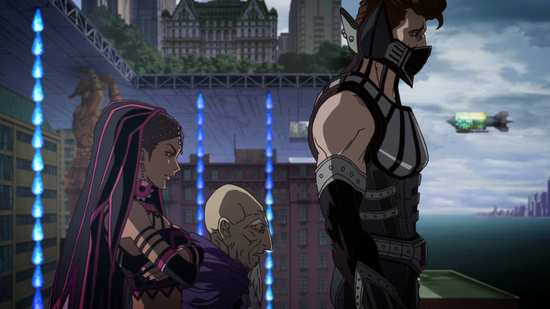
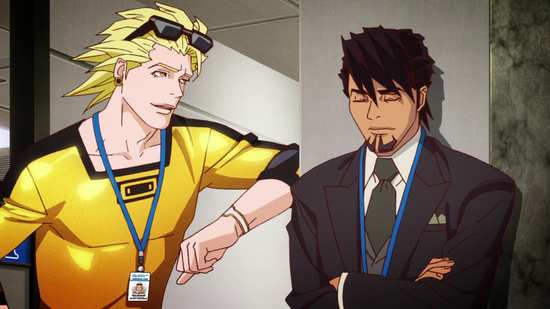
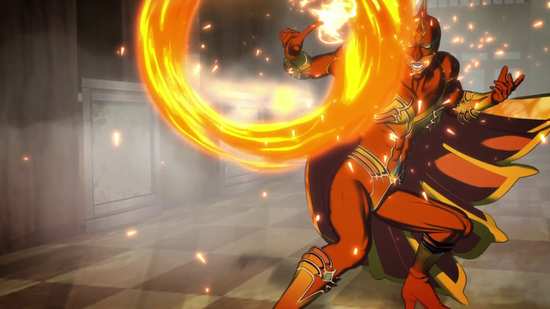
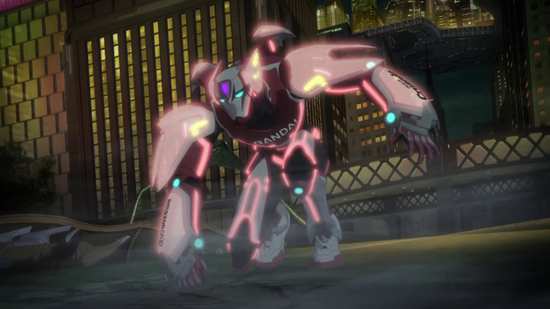
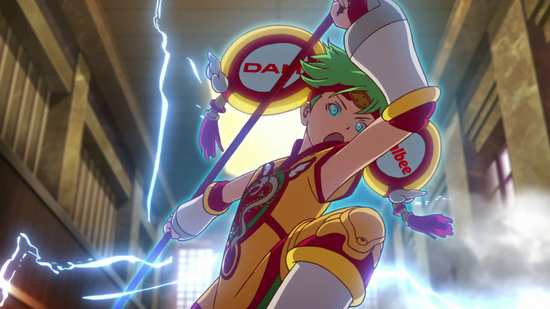
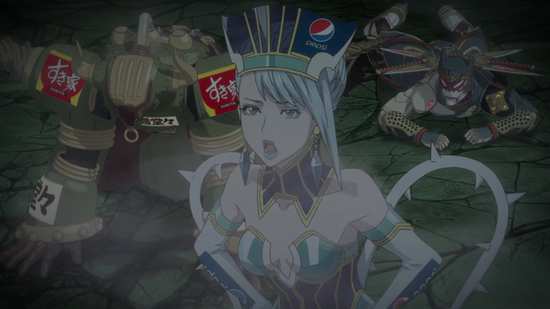
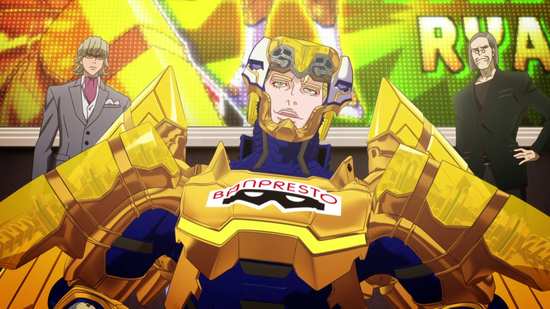
Your Opinions and Comments
Be the first to post a comment!